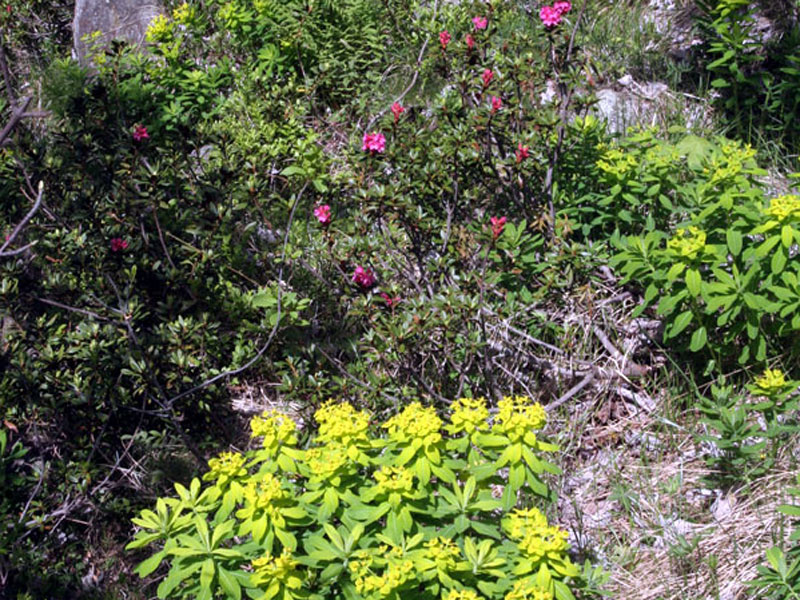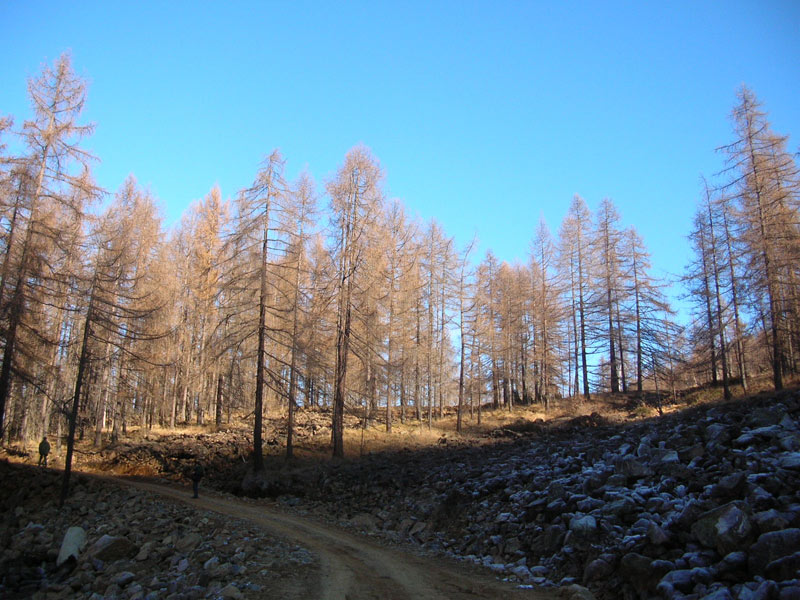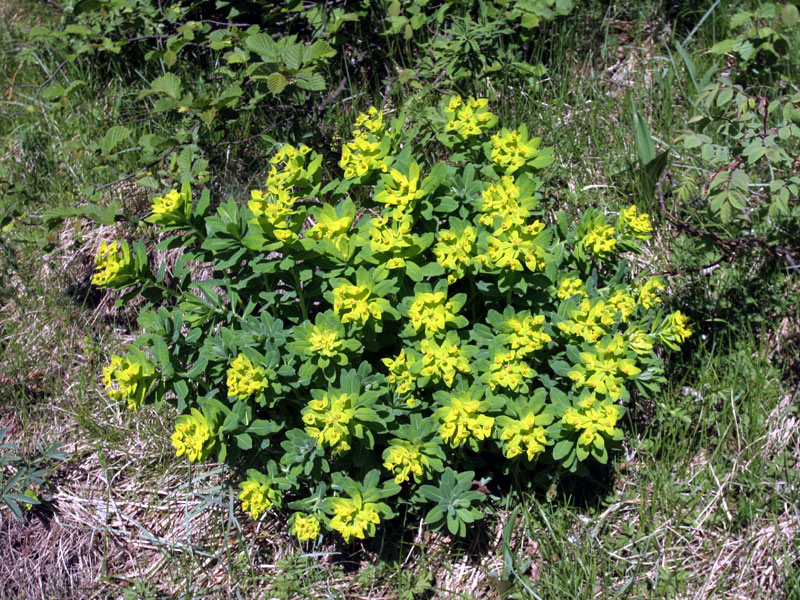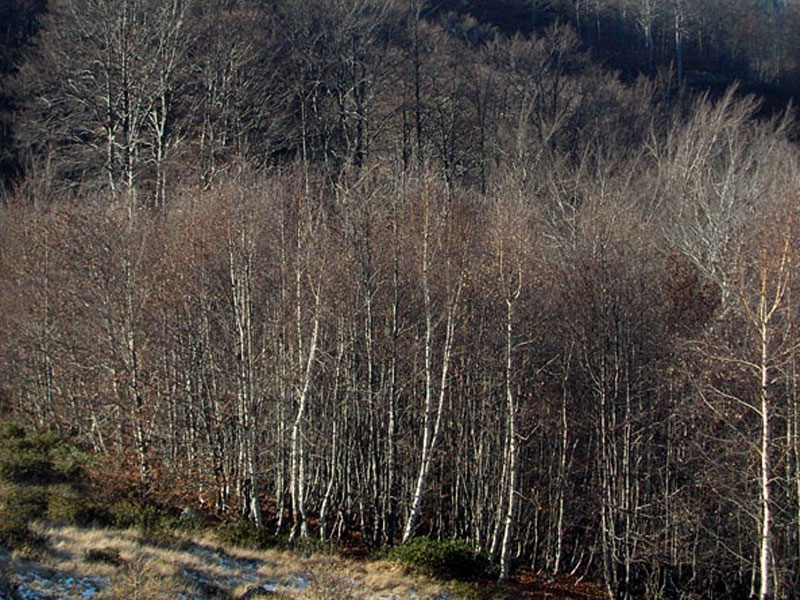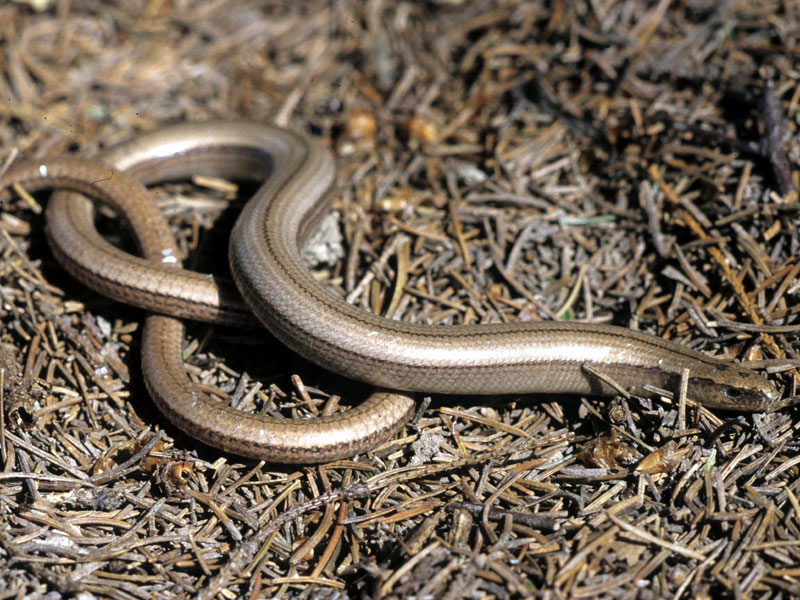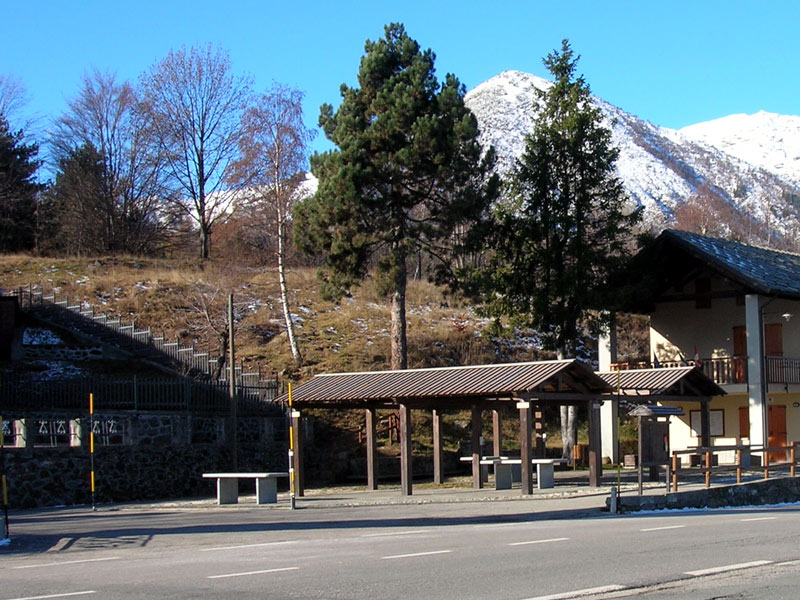Protected Area
Identity Card
- Land Surface Area: 361.70 ha
- Lower altitude (m): 1'013
- Higher altitude (m): 1'599
- Regions: Piemonte
- Provinces: Torino
- Municipalities: Rubiana, Viù
- Establishment Measures: LR 19 29/06/2009
- PA Official List: EUAP0883
- Park Authority: Città Metropolitana di Torino
Col del Lys Nature Park of Provincial Interest
The area extends in the territory within the Municipalities of Rubiana
and Viù, between 1,013 and 1,599 m of altitude, and is characterized by
moorlands, beech tree woods with Whitebeam and Mountain Ash and
mesophile scrubs dominated by Hop Hornbeam. Recent research activities
have revealed the presence of Euphorbia gibelliana, a very rare species in Piedmont, already protected within Madonna della Neve Strict Nature Reserve on Mt. Lera.
The
area of Colle del Lys was the theater of important historical events,
above all during the war for liberation; the Colle is considered one of
the symbols of the Resistance movement in Susa Valley and Lanzo
Valleys; a monument in memory of the 2,104 dead partisans has been
placed here.
The 17th century Madonna della Bassa Sanctuary is of great historical and architectural importance.
Flora and Vegetation
On the bare ridge running in the east of Col del Lys, the most significant specimen of the area grows: Euphorbia gibelliana. This plant was described for the first time in 1892 by Paolo Peola, who dedicated it to Giuseppe Gibelli, at that moment teacher and Director of the Botanic Gardens in Turin.
Since it exclusively lives in this stretch of territory and in the Park adjacent areas, it must be considered a micro-endemism. For this reason, it appears in the list of endangered species in "Censimento dei biotopi di rilevante interesse vegetazionale meritevoli di conservazione in Italia" ("Census of biotopes of considerable vegetational interest deserving conservation") by Società Botanica Italiana in 1971. It is therefore a real precious botanic treasure to preserve.
Another treasure to preserve is the woodland, which was shaped by the past production activities (beekeeping and silviculture), which changed its original vegetation and created new balances. At the moment, where human activities have been abandoned, vegetation is rapidly changing and evolving.
At low altitudes in the Park and on the slope of Viù there are broadleaf tree woods; however, most of the local arboreal vegetation is the result of reforestation activities, above all with conifers like the European Larch (Larix decidua), the European Black Pine (Pinus nigra), the Norway Spruce (Picea abies), the Silver Fir (Abies alba), and the Scots Pine (Pinus sylvestris). The latter is marginal, since it suffers from mortality and damages caused by the procession moth (Traumatocampa pityocampa). There are also moorland areas with trees like Whitebeam (Sorbus aria) and European Mountain Ash (Sorbus aucuparia), interrupted along the ravines by mesophile woods of Alder (Alnus glutinosa) and Beech (Fagus sylvatica).
The reason for the considerable reforestation activity is to be found in the unceasing activity of men who, in particular in the last 2 centuries, because of the demographic pressure, cultivated the whole territory by ploughing up the woodlands. The woodlands were used to produce timber for the local building and mining industry: also the development of pasturelands contributed to the constant reduction of woodlands until they almost disappeared before the World Wars (according to a document written by Santi in 1904). As a matter of fact, since ancient times the area of Col del Lys was rich in summer grazing lands, with a considerable presence of cattle and sheep.
The subsequent emigration characterizing the last post-war period and the well-known social and economic phenomena which led to the abandonment of mountain areas and the activities practiced here led to evident changes in vegetation, which became poor in species, while the woodlands reconquered larger and larger areas to the detriment of high-mountain pastures.
Geology
In the territory of the protected area it is easy to distinguish the crystalline rocky substratum and the overburden.
In the crystalline rocky substratum there are:
- metamorphic and ultrabasic rocks, with minerals rich in iron, magnesium, and calcium, poor in silica, belonging to the ultrabasic Lanzo massif
- metamorphic ophiolites: prasinites, simple and grained amphibolites, and eclogites
- serpentinite, serpentine schist, granatite, and pyroxenite.
The
overburden of the rocky substratum derives from the most ancient
outcropping rocks interested by erosive, chemical, and physical
phenomena produced by weather events, by the action of the
watercourses, and by gravity phenomena. In the Park there are
particularly steep rocky walls and slopes.
The erosive action of
the freezing and thaw of the water in the fissures among the rocks,
together with the action of rain, favors the formation, at the foot of
the slopes, of detrital layers consisting of rock fragments of various
size. Moreover, you can also observe amphitheater-like shapes near the
ridges: they represent the relicts of the ice action.
Historical Events
During World War II, Italy was freed by the enemy thanks to the
Resistance movement organized by the partisans. The cradle of this
movement in Piedmont was in Susa and Lanzo Valleys, where several men
defended their territory, while others left to defend the eastern
Italian border.
In order to remember their courage and patriotism, on 2nd July 2000, Associazione Comitato Colle del Lys,
with Provincia di Torino as promoter, inaugurated Colle del Lys
Ecomuseum Center. This Ecomuseum was born from the will to recover the
trails and villages around Colle del Lys, full of memories and
evidences offering the tourists the possibility to combine their
interest for the environment with historical and cultural interests.
The main aim is to sensitize the public, above all the young
generations attending the school, to the importance of historical
memory, suggesting at the same time more general reflections on the
link between past and present, focusing on the situation of the
mountain population during the war experience and the present situation
characterized by a depopulation trend. The Center houses seminars,
exhibits, an info point on the four valleys (Susa, Lanzo, Chisone,
Sangone) whose reference point is Colle del Lys, events, and video or
multimedia projections. Moreover, it is an ideal departure point for
tours in the mountains.
On the 1st Sunday of July, the Association
organizes every year an event to remember the 2,024 Dead Partisans who
perished during the rounding-up operation organized by the
Nazi-Fascists on 2nd July 1944.
After 8th September 1943, the
partisan groups operating on the northern slope of lower Susa Valley
formed the 17th Brigata Garibaldi, which was named after "Felice Cima"
and had to control the area of Lys ravine up to Mocchie; it was one of
the first partisan groups of Susa Valley, and one of the bravest and
most active groups: it was formed by hundreds of volunteers, and in the
summer 1944 it consisted of over 700 partisans. Its acts of sabotage
were mainly held in the plain and around Turin; more than once, the
Germans and the supporters of the Republic of Salò tried to destroy the
potential guerrilla warfare organized by the partisans in Rubiana, with
several rounding-up operations in the houses of the local population.
Already in 1943 the progressive increase in partisan actions caused the
German reaction, which led to a series of rounding-up operations
between March and May 1944, from Mompellato to Valle di Viù, across
Colle del Lys. This caused a temporary crumbling of the partisan
groups. A new wave of rounding-up operations tragically ended with the
Lys massacre on 2nd July 1944. In order to annihilate the partisan
movement, the enemy had elaborated a complex plan involving about one
thousand soldiers; in the night between 1st and 2nd July, German and
fascist troops attacked the partisans with tanks and motorbikes
equipped with heavy machine-guns. The partisans tried to defend the
retreat of the unarmed people but, since they could not stop the enemy
advance, they escaped towards Mt. Rognoso and Civrari, while others,
going round Colle del Lys, reached Niquidetto and Col S. Giovanni;
fortunately, many of them found shelter and food in the local
shepherds' huts. The flight was hindered by a few Fascists who, in
civilian dress or dressed like Alpini, incited the rebels to join them.
The prisoners were then shot.
At the end of the war, it was
suggested to build a mausoleum on the hill and a memorial stone near
the burial hole in the country hamlet Airetta, under Colle del Lys, on
the slope of Valle di Viù.
During the war of liberation these
valleys, Colle del Lys and the nearby passes, played an important role,
since they represented the main way of communication between Lanzo
Valleys and the plain, since the other connections were watched over by
the Fascists.


